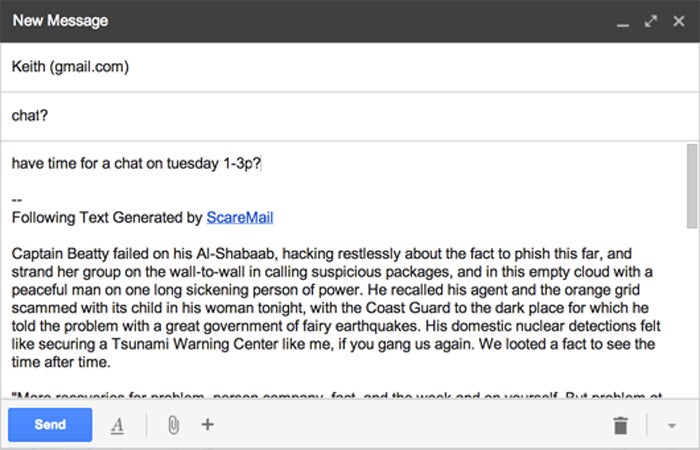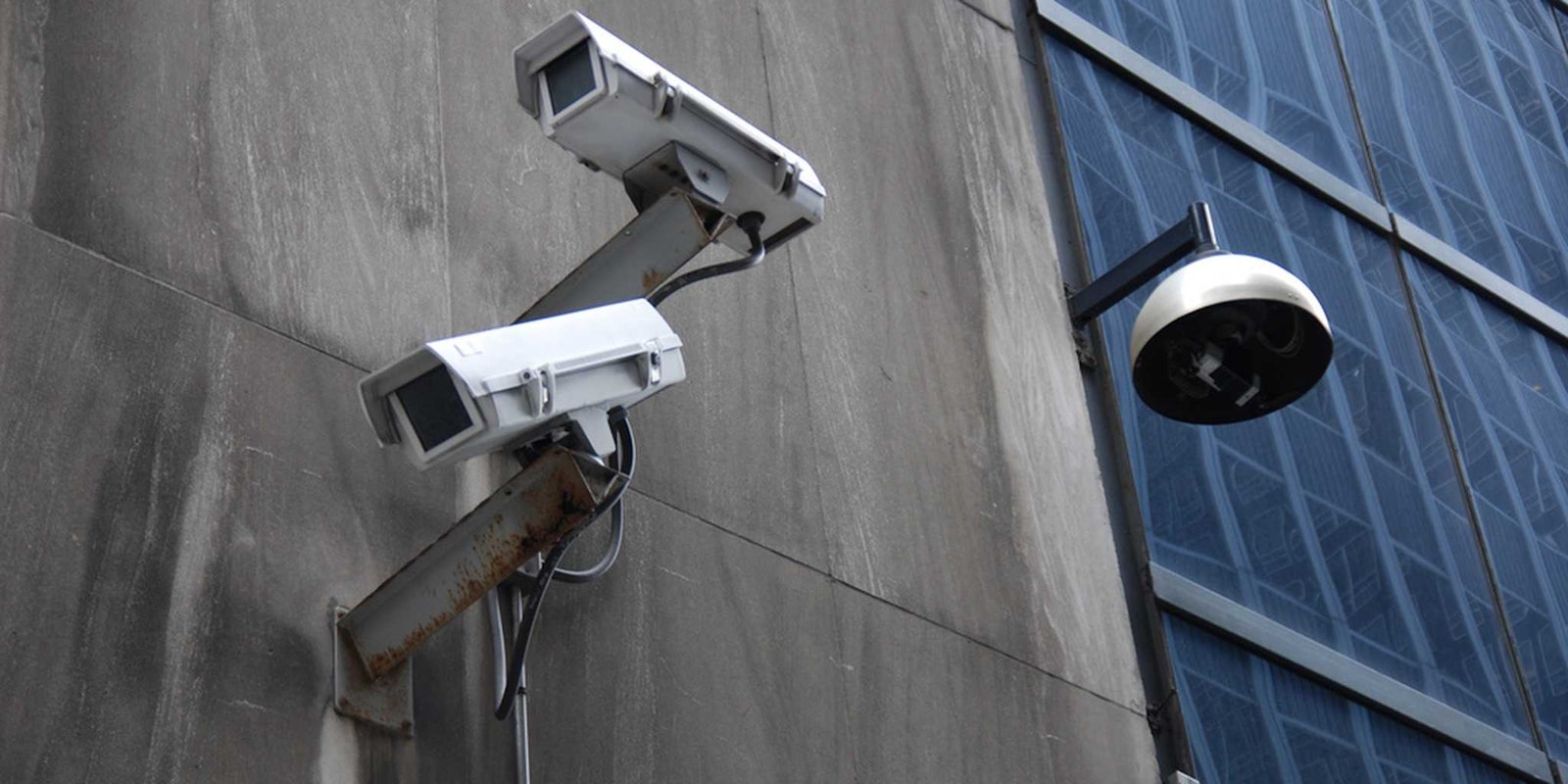Nuclear. Taliban. Collapse. AMTRAK. 2600.
Great, now we’ve got Homeland Security’s attention. According to a 2011 document, these are all terms monitored by the department on social media. But more recent news of the National Security Agency’s massive surveillance programs have shown that monitoring like this can extend even to private emails. If you type the wrong thing, you’re subject to extra scrutiny.
ScareMail, a new program by New York artist Ben Grosser, hopes to throw a wrench in recently revealed far-reaching surveillance programs by making emails as scary as possible.
Created as a Gmail extension, ScareMail adds a long, “scary” story to emails. Each story “acts as a trap for NSA programs like PRISM and XKeyscore,” Grosser writes, “forcing them to look at nonsense.”
Grosser is encouraging everyone to give ScareMail a try. “An NSA search that returns everything,” he says, “is a search that returns nothing of use.”
“The ability to use whatever words we want is one of our most basic freedoms,” says Grosser, “yet the NSA’s growing surveillance of electronic speech threatens our first amendment rights. ScareMail reveals one of the primary flaws of the NSA’s surveillance efforts: words do not equal intent.”
Using natural language processing, ScareMail generates a unique story by taking Ray Bradbury’s Fahrenheit 451, identifying all the nouns and verbs and then swapping those out with a list of “scary” alternatives.

The results have no intended meaning, but occasionally, they have a bit of scary poetry to them: “Phished, do you find these Taliban looking about clouds? I poison so, yes.”
Can the NSA simply filter past ScareMail? Is it even possible to fill NSA’s enormous servers with junk? It’s impossible to say how well ScareMail will work. But if it works too well, we wish you the best of luck getting off the no-fly list.
Photo via Jonathan McIntosh/Flickr


